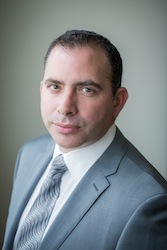Articles Posted in Uncategorized
FAQs – 1031 Exchanges (Tax Deferred Exchanges) for Commercial Real Estate
By: Alejandro E. Jordan, JD
Frequently Asked Questions (FAQs) – 1031 Exchanges (Tax Deferred Exchanges) for Commercial Real Estate
Question 1: What is the difference between a sale and an exchange?
Answer 1: A sale is an exchange of real property for cash. An exchange is a transfer of property for other like-kind property – a “non-taxable” sale.
Question 2: What provisions are required in a Purchase and Sale Agreement to enter into an exchange?
Answer 2: A Purchase and Sale Agreement should contain language establishing the exchangor’s intent and notifying the buyer of the exchange. Examples are:
When Selling:
“It is the intent of the Seller to perform an IRC Section 1031 tax deferred exchange by trading the property herein with [_________________]. Buyer agrees to execute an Assignment Agreement at the request of Seller at no additional cost or liability to Buyer.”
When Buying:
“It is the intent of the Buyer to perform an IRC Section 1031 tax deferred exchange by trading the property herein with [_________________]. Seller agrees to execute an Assignment Agreement at the request of Buyer at no additional cost or liability to Seller.”
Question 3: Can an investor trade from several small properties into one large one?
Investing in NNN Triple Net Leased Commercial Real Estate Properties
Investing in NNN Triple Net Leased Commercial Real Estate Properties
Not all real estate investors are created equal. A large number of them simply are looking to place their hard-earned money into a safe haven to avoid the often unpredictable nature of the financial market. In a nutshell, based on how the leases are drafted, NNN leased investments state that the tenants are responsible for paying rent plus the operating expenses of the building such as taxes, insurance, repairs and utilities. A true passive investment for the owner/landlord.
These NNN (Triple Net Leased) investments are valued using a combination of factors, such as the tenant’s credit, the length of the lease and rent escalations over the term, and, last but not least, the real estate itself.
 “NNN leased properties survive the ups and downs of the markets. As an investor, you know your lease is guaranteed long term, often with rental escalations worked into the leases, meaning the investor will be receiving a steady income, regardless of how the outside forces are performing,” says Enrique Jordan, Investment Sales Associate with NAI Miami, Commercial Real Estate Services Worldwide. Continue Reading ›
“NNN leased properties survive the ups and downs of the markets. As an investor, you know your lease is guaranteed long term, often with rental escalations worked into the leases, meaning the investor will be receiving a steady income, regardless of how the outside forces are performing,” says Enrique Jordan, Investment Sales Associate with NAI Miami, Commercial Real Estate Services Worldwide. Continue Reading ›
1st Quarter 2014 Industrial Market Report for Miami-Dade County CRE
By: Alejandro E. Jordan, Esq.
Total Industrial inventory in the Miami-Dade County market area amounted to 229,374,658 square feet in 8,790 buildings as of the end of the second quarter 2014. The Flex sector consisted of 16,908,307 square feet in 600 projects. The Warehouse sector consisted of 212,466,351 square feet in 8,190 buildings. Within the Industrial market there were 782 owner-occupied buildings accounting for 30,523,593 square feet of Industrial space.
Sales Activity
Miami-Dade County industrial sales figures for industrial building sales of over 15,000 square feet fell during the first quarter 2014 in terms of dollar volume compared to the fourth quarter of 2013.
Miami Dade Judges Expediting Residential Foreclosure Cases
Offices located in Delray Beach and Coral Gables, FL
According to just released statistics, judges in Miami-Dade County have been processing residential foreclosure cases twice as fast as judges in Broward County. While Miami-Dade has South Florida’s largest number of foreclosures, the latest plan in place in Miami-Dade calls for all residential foreclosure cases to be cleared by 2016. Paving the way for the fast foreclosure processing times are a set of newly hired magistrate judges and increased funding from the state in the tune of $25 million dollars.
Broward County is also stepping up its efforts to clear the foreclosure backlog. With the newly freed up money from the Florida Legislature, Broward County is in the process of funding the equivalent of three senior judges, two additional general magistrates, 18 case managers and six secretaries, all of whom will be devoted to processing foreclosure cases for the next year and half.
According to the forecasts, Florida will face 680,000 new foreclosure cases between now and 2016. The majority of these foreclosure cases will be filed in Miami-Dade, Broward County, and Palm Beach County. Obviously, the number of foreclosure cases in these counties is already staggering. For instance, in Broward County alone, there are over 40,000 cases being prosecuted by lenders. Whereas in Miami-Dade, there is a current estimated backlog of 48,000 cases. With numbers like these, Palm Beach County’s estimated 9,000 residential foreclosure cases looks miniscule, however, those cases definitely take a toll on a county that was previously unaccustomed to massive case loads.
 Florida Real Estate Lawyers Blog
Florida Real Estate Lawyers Blog




